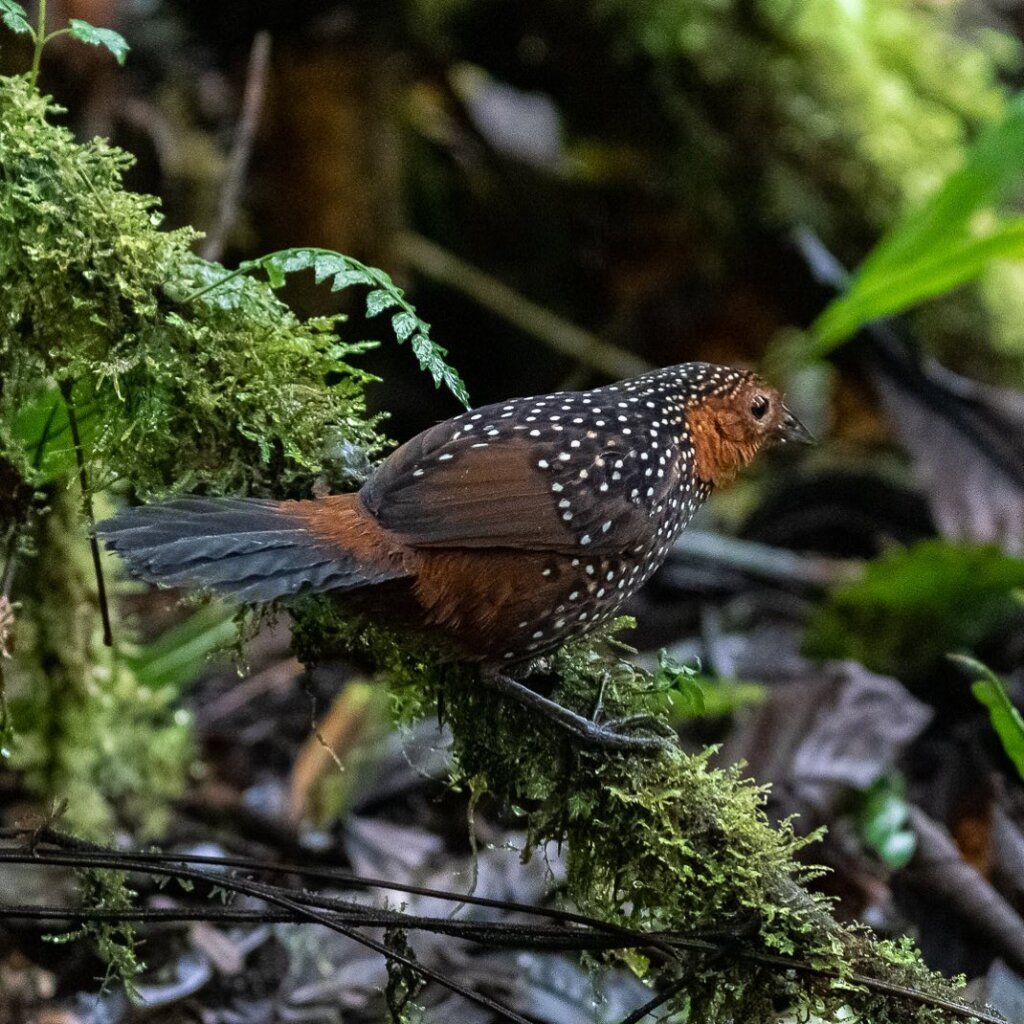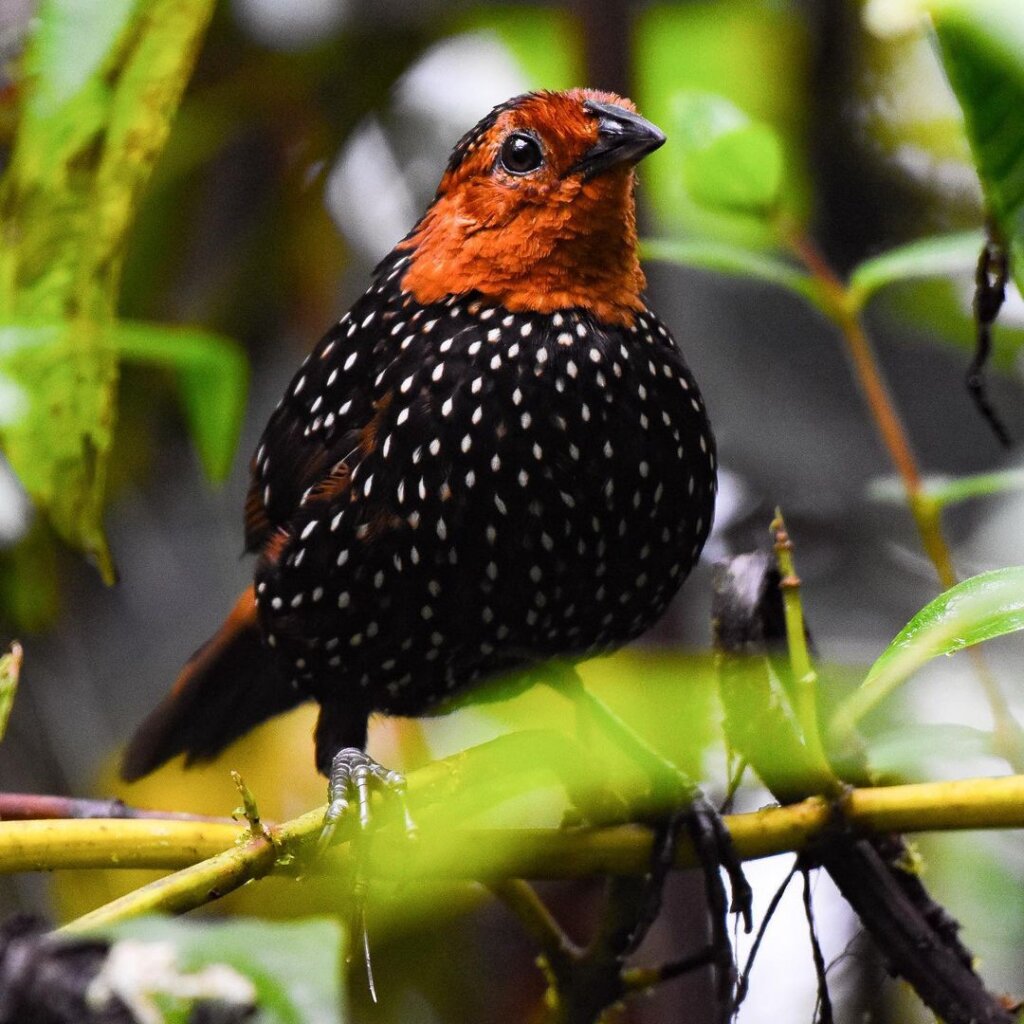A bird that is the antithesis of a typical tapaculo, the Ocellated (definition-resembling an ocellus: EYELIKE) tapaculo is not only large, but it is also spectacular.
Meet the Ocellated Tapaculo

The ocellated tapaculo (Acropternis orthonyx) is a large bird averaging 8.3-8.7 inches in length, (21-22 cm), and 2.8-3.8 oz (80 and 100 grams). This is a mostly black bird with large white spots, and brown flanks, along with a red head and throat.

A loud call, which seems to be used by birds to announce their presence is described as a “loud, emphatic WHEEUW! whistle” can be heard from quite a long distance.
Both sexes look very much alike.

These birds can be found from the Cordillera Central and Cordillera Oriental of Colombia to the mountains of northwestern Venezuela, with small populations also present in the Cordillera Occidental (in Antioquia and the Páramo de Frontino at least).

Ocellated tapaculo favors humid and rather low-growing forests with canopy heights of about 50–80 ft (15–25 m). Preferring dominant trees covered in, or heavily overgrown with epiphytes. More important is the presence of a tangled understory with abundant stands of South American mountain bamboo (Chusquea), forming an impenetrable thicket together with other plants such as Geonoma weberbaueripalms or Ericaceae shrubs. Due to its dependence on bamboo thickets which only grow in clearings, it seems to tolerate selective logging well and may actually benefit from it.

These birds like to eat plant material and arthropods, which it digs up using both feet simultaneously.

Little is known about the breeding of this species. However, like some tapaculo a nest is perhaps placed above the ground, in a hollow trunk, or at a tunnel’s end. The tunnel may be a rodent’s abandoned burrow or it could be dug by the bird itself. The nest is known to be quite soft and is built from twigs, moss, grass, and root fibers. Typically two to three eggs are laid in this nest. A typical tapaculo egg is white in color and it is quite large when compared to the tiny size of the bird. These eggs are incubated for a period of 15-17 days and the gestation period lasts for 14-15 days. Males of some species are known to incubate the eggs too. The young are hatched naked and are fed by the female.

Though shy and retiring and affected by habitat destruction like all forest birds of the tropical Americas, it is common enough to be considered a Species of least concern by the IUCN red list.

.